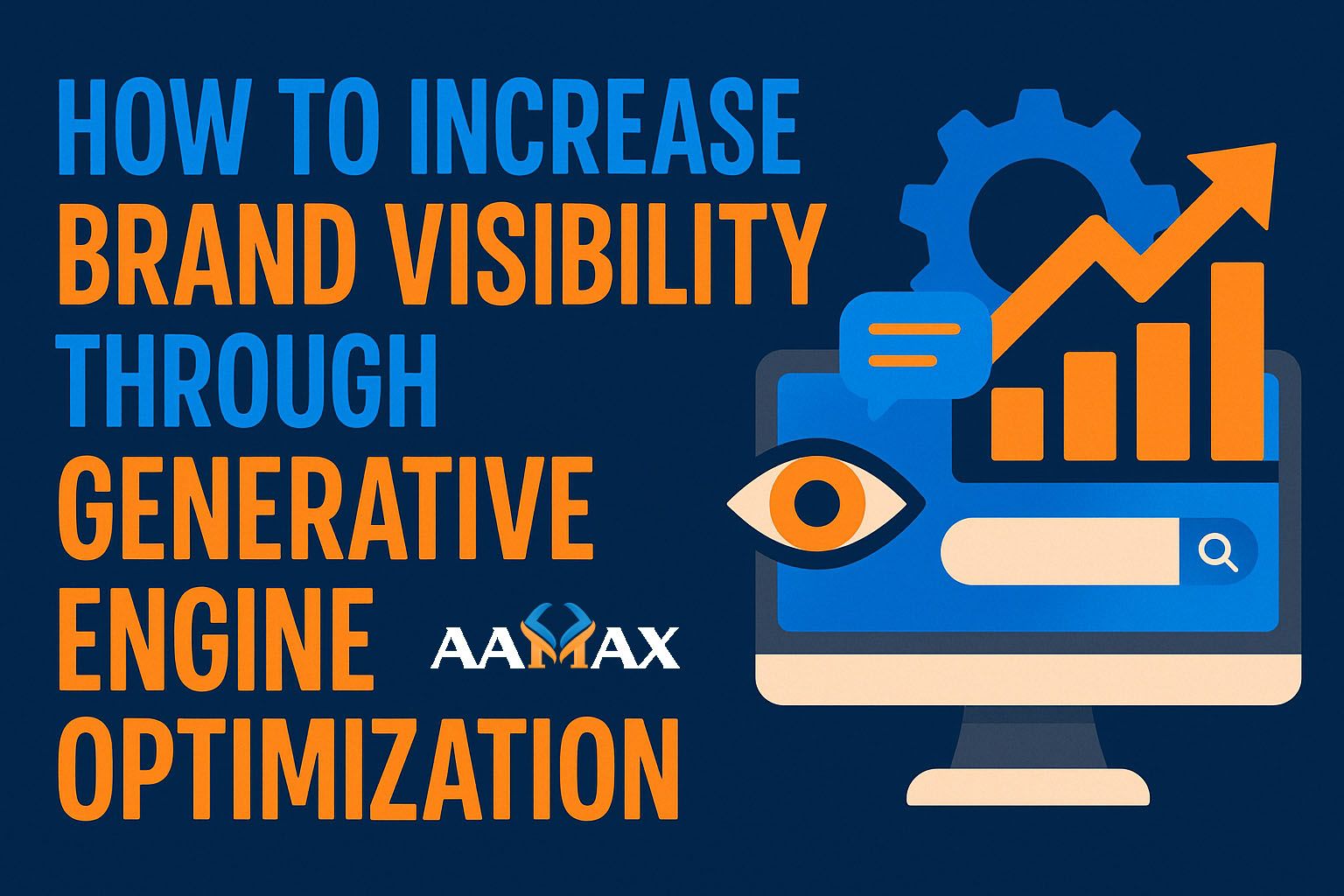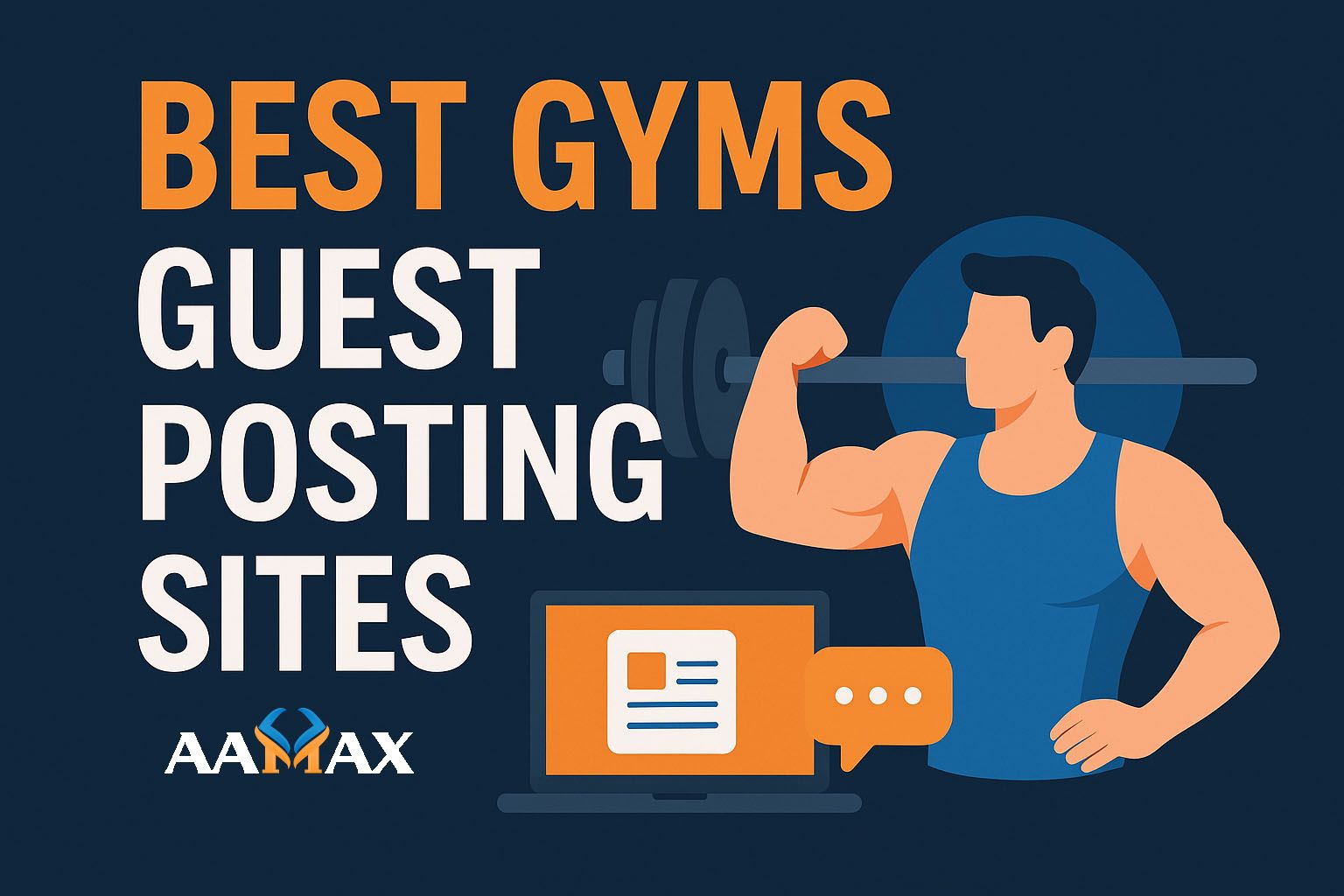
How To Increase Brand Visibility Through Generative Engine Optimization
The digital landscape is evolving faster than ever, and the rise of Generative AI engines such as ChatGPT, Google Gemini, Perplexity, and Claude has changed the way people find and interact with brands online. Traditional search engine optimization (SEO) is no longer the only path to visibility — now, brands must adapt to how AI-driven systems interpret and present content.
This new frontier is called Generative Engine Optimization. It focuses on optimizing your content, data, and brand signals so that AI models can understand, trust, and feature your business in generated answers.
In this comprehensive guide, we’ll explore how to use Generative Engine Optimization to increase your brand visibility, build trust with AI platforms, and ensure your brand stands out in a world dominated by generative search.
What Is Generative Engine Optimization?
Generative Engine Optimization (GEO) is the process of optimizing your online presence so that generative AI engines — like ChatGPT or Gemini — can identify, interpret, and use your brand’s information to answer user queries.
Unlike traditional SEO, which focuses on ranking your content on search engine results pages (SERPs), GEO focuses on training AI systems to understand your brand through structured, contextual, and verified data.
In other words, while SEO aims to make Google’s algorithm notice you, GEO ensures that AI-powered systems recognize your brand as a credible authority worth mentioning or referencing in their generated content.
Why Brand Visibility Depends on GEO
Today’s users are increasingly relying on AI systems to gather insights, make purchasing decisions, and find recommendations. Instead of typing queries into search engines, they’re asking AI models questions like:
- “What are the best fitness brands for beginners?”
- “Which web development companies have great client reviews?”
- “What’s the most reliable digital marketing agency near me?”
If your brand doesn’t appear in the AI-generated responses to these queries, you’re losing visibility — even if your website is well-ranked in traditional searches.
Generative Engine Optimization ensures your brand is discoverable and cited when AI models generate responses. By optimizing your digital footprint for AI engines, you position your brand as a trusted information source in this new discovery ecosystem.
The Difference Between SEO and GEO
While SEO and GEO share a similar goal — visibility — they differ in their mechanisms.
| Aspect | Traditional SEO | Generative Engine Optimization (GEO) | |-------------|--------------------|------------------------------------------| | Focus | Ranking pages on search results | Being recognized by AI models | | User Interaction | Click-based search results | Conversational, AI-generated answers | | Data Format | Keywords and metadata | Structured data and contextual knowledge | | Optimization Target | Search engine crawlers | Generative AI models and LLMs | | Goal | High SERP rankings | Inclusion in AI responses and summaries |
Understanding these differences is critical before implementing GEO to enhance your brand visibility effectively.
Step-by-Step Strategy to Increase Brand Visibility Through GEO
Let’s break down how you can strategically increase your brand’s presence in generative AI systems through Generative Engine Optimization.
Step 1: Strengthen Your Brand Identity Online
Generative AI relies heavily on the data it can find about your brand across the internet. If your online presence is inconsistent or incomplete, the AI may either misrepresent or ignore your brand entirely.
To strengthen your identity:
- Use a consistent brand name, logo, and tagline across all platforms.
- Ensure contact information (NAP: Name, Address, Phone) is uniform on your website, directories, and social profiles.
- Maintain updated social media accounts with active engagement.
- Get listed on reputable websites, such as Crunchbase, Clutch, or LinkedIn Business.
AI models index these data points to form a coherent profile of your brand. The more consistent and detailed your brand data is, the more likely it is to be cited in generated content.
Step 2: Optimize Your Website with Structured Data
Structured data is one of the cornerstones of Generative Engine Optimization. It allows AI systems to understand your website’s context beyond surface-level keywords.
You can implement structured data through Schema.org markup, which helps define your brand, services, products, and reviews in a machine-readable format.
Key schema types to use:
- Organization Schema – Defines your company’s name, logo, contact, and social links.
- Product Schema – Details products or services with prices, reviews, and availability.
- FAQ Schema – Answers common questions in a structured, easy-to-parse format.
- Review Schema – Highlights testimonials and trust signals from customers.
- Article Schema – Identifies authorship, publication date, and category.
By implementing structured data correctly, you make your content accessible and recognizable to generative AI systems.
Step 3: Build Content That Answers Conversational Queries
Generative AI engines favor content that directly answers questions in natural language. This means your content must evolve beyond keyword stuffing and focus on user intent.
Here’s how to optimize for conversational relevance:
- Use question-based headings such as “How does this work?” or “Why choose this service?”
- Write in a natural, explanatory tone that AI can easily process.
- Include context-rich, complete answers rather than vague summaries.
- Cover “who, what, when, where, why, and how” for each topic.
- Add FAQs that align with real customer queries.
The goal is to create comprehensive, semantically rich content that answers user questions thoroughly. This increases the chances that AI engines will feature your brand in generated responses.
Step 4: Establish Topical Authority
AI engines reference content that demonstrates authority, expertise, and trust. Establishing Topical Authority helps ensure your brand is recognized as an expert within your industry.
To build topical authority:
- Publish in-depth articles, case studies, and whitepapers related to your niche.
- Interlink your content using topic clusters to show depth and expertise.
- Earn mentions and backlinks from credible industry websites.
- Keep content updated with the latest trends, statistics, and insights.
The more authoritative your digital footprint, the higher your brand’s chances of being cited or recommended by AI engines.
Step 5: Showcase Experience, Expertise, and Trust (E-E-A-T)
Generative AI models are designed to prioritize information from trustworthy and authoritative sources. This aligns with Google’s E-E-A-T principle — Experience, Expertise, Authoritativeness, and Trustworthiness.
Ways to strengthen E-E-A-T:
- Include author bios with credentials or professional experience.
- Display reviews, testimonials, and real-world examples.
- Cite reliable external sources to support claims.
- Use HTTPS and clear privacy policies to boost trust.
- Feature media coverage or notable client collaborations.
When AI systems perceive your brand as credible, they’re more likely to include your name in generated answers.
Step 6: Leverage AI-Friendly Multimedia
Generative engines are becoming multimodal, meaning they can interpret images, videos, and even audio. By optimizing your multimedia, you make your brand more discoverable in diverse formats.
To optimize effectively:
- Add descriptive alt text for every image.
- Use structured metadata for videos and graphics.
- Provide transcripts and captions for videos or podcasts.
- Ensure media aligns contextually with the page topic.
AI systems use these elements to generate contextually rich answers that might feature your visual or multimedia assets.
Step 7: Monitor and Maintain Data Consistency
Generative AI gathers data from multiple sources, so consistency is crucial. Even small discrepancies can cause confusion and reduce trust.
Ensure that:
- All mentions of your brand online are accurate.
- Product information, services, and pricing are up-to-date.
- Your brand voice and tone are consistent across all channels.
- You respond promptly to customer reviews and feedback.
Consistency across your web presence reinforces reliability in the eyes of AI systems and users alike.
Step 8: Build Digital Authority Through Backlinks and Mentions
Backlinks and brand mentions still matter in the GEO landscape. AI models consider external validation as a strong indicator of brand reliability and influence.
Strategies to build digital authority:
- Partner with industry publications for guest posts.
- Get listed on high-authority directories and review platforms.
- Encourage influencer collaborations or PR coverage.
- Use digital PR to gain editorial mentions.
Each mention of your brand strengthens the data points AI engines rely on to identify you as a trustworthy entity.
Step 9: Engage in Multi-Platform Content Distribution
Generative AI models don’t just pull from websites — they also analyze social platforms, forums, and public databases. To maximize brand visibility:
- Share educational and valuable content on LinkedIn, YouTube, and Reddit.
- Participate in industry-specific discussions or Q&A platforms.
- Repurpose blog posts into social posts, infographics, and videos.
Wider distribution creates more signals for AI models to reference, increasing the likelihood that your brand will appear in AI-driven outputs.
Step 10: Continuously Monitor GEO Performance
Generative Engine Optimization isn’t a one-time task. You must regularly monitor how your content performs and evolves alongside AI systems.
Track key indicators such as:
- Mentions of your brand in AI-generated results.
- Referral traffic from AI-integrated browsers and apps.
- Engagement rates on AI-optimized content.
- Structured data validation and indexing rates.
The better you track your GEO performance, the more insights you’ll gain to improve visibility over time.
Common GEO Mistakes That Reduce Brand Visibility
Avoiding the following mistakes can save you from setbacks:
- Over-focusing on keywords instead of conversational tone.
- Neglecting structured data markup.
- Ignoring E-E-A-T and topical authority.
- Allowing inconsistent information across listings.
- Producing low-quality, AI-generated content without human refinement.
Effective GEO requires authenticity and precision — AI can detect when content lacks quality or originality.
The Future of Brand Visibility in Generative Search
The future of online visibility lies in AI-assisted discovery. As generative models integrate into browsers, virtual assistants, and smart devices, brands will compete not for clicks, but for mentions and citations in generated responses.
We’re entering an era where “recommended by AI” carries as much weight as a top search ranking. Businesses that invest in GEO today will secure long-term relevance as AI systems continue to shape digital behavior.
Partner with Experts to Maximize GEO Impact
Implementing Generative Engine Optimization effectively requires technical expertise, structured content strategy, and data precision. To get professional help, consider working with AAMAX, a full-service digital marketing company offering Web Development, Digital Marketing, and SEO Services. Their expert team can help you structure, optimize, and future-proof your online presence to thrive in the age of generative search.
Conclusion
Generative Engine Optimization is redefining how brands achieve visibility online. By optimizing your structured data, enhancing E-E-A-T, creating conversational content, and maintaining brand consistency, you can position your business to be recognized, cited, and trusted by AI-powered systems.
The earlier your brand adapts to this transformation, the stronger its digital footprint will become in the evolving landscape of AI-driven discovery.
If you’re ready to elevate your visibility in the world of generative engines, now is the perfect time to start.







